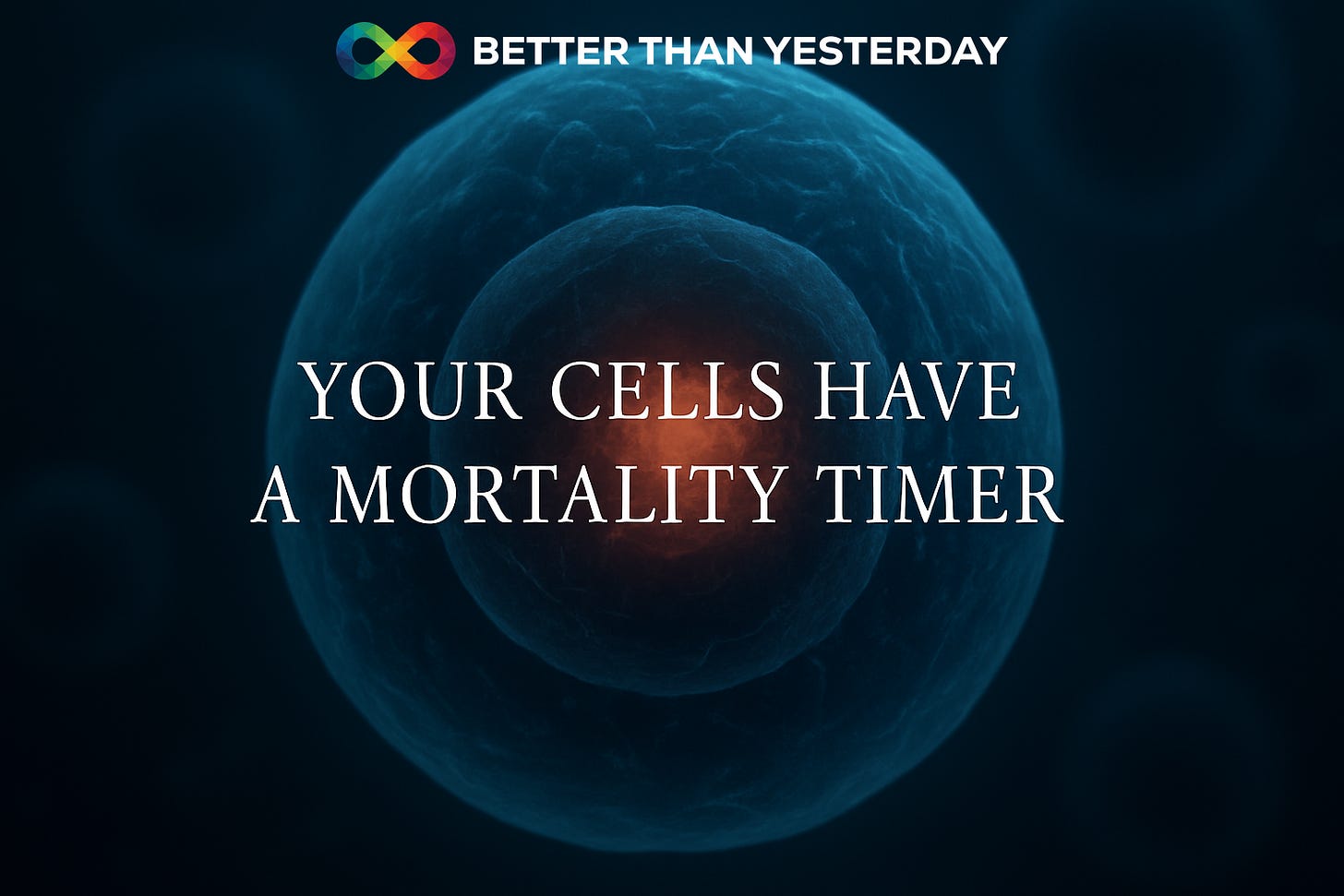🧬 Your Cells Have a Mortality Timer
How a tiny structure deep inside your cells could hold the key to aging—and how to hack it

I can’t stop thinking about this:
Your cells have a built-in countdown clock.
It’s not metaphorical.
It’s physical.
And it's called... the nucleolus.
What the heck is the nucleolus?
The nucleolus is a tiny blob inside your cell's nucleus. It’s the ribosome factory—responsible for making the machinery that builds proteins. Every biology textbook mentions it, but new research is revealing something deeper.
Turns out, the nucleolus also acts like a mortality timer.
As cells age, this little structure gets bigger. When it grows too large, the cell typically only divides about five more times... then dies.
Let that sink in: the size of your nucleolus can predict when your cells are about to expire.
The science behind it
In a 2024 study from Weill Cornell Medicine published in Nature Aging, researchers observed how nucleolar enlargement impacts cell lifespan.
🧫 Bigger nucleolus = fewer divisions left
As the nucleolus grows, it becomes permeable. This “leakiness” allows harmful proteins to enter and disrupt the ribosomal DNA (rDNA). Once that DNA destabilizes, the aging process kicks into overdrive.
🔬 Small nucleolus = longer life
When scientists tethered rDNA to the nuclear membrane in yeast (essentially anchoring it), the nucleolus stayed compact. Result? The cells aged slower—mimicking the effects of caloric restriction.
This is huge. We’ve known that calorie restriction can extend lifespan. But now we have a possible mechanism.
What does this mean for us?
Obviously, we're not yeast. But many core aging processes are conserved across species.
The nucleolus could be a new biomarker for biological age—and potentially, a target for extending healthspan.
From a biohacker's lens, it raises one very exciting question:
🧠 Can we keep our nucleoli small?
Practical ways to shrink your cellular mortality timer
💤 Prioritize deep, restorative sleep
Sleep helps repair DNA and regulate stress hormones that affect nuclear structure.
🥦 Try 16:8 intermittent fasting
Fasting mimics calorie restriction, which has already been linked to slower nucleolar growth in yeast.
🧘♂️ Master your stress response
Stress = inflammation = cellular chaos. Daily breathwork, meditation, or even cold exposure can help.
💊 Consider CR mimetics
Supplements like spermidine or NMN (from reputable sources, in low doses) may support nuclear health. Always cycle and consult your doc.
📉 Track biological age
Use tools like epigenetic clocks, rDNA methylation testing, or HRV to monitor progress.
Objection: “But how do I even know what my nucleoli are doing?”
Great question. Most people can't measure their nucleolar size yet. But:
✅ Many upstream factors are trackable:
Stress levels
Sleep quality
Fasting protocols
Mitochondrial function
rDNA stability (coming soon)
You don’t need a microscope to start influencing these.
Wrap-up
Your nucleolus is small—but mighty.
It’s quietly watching the clock.
Every bite, breath, and thought you take could be pushing that timer forward—or pressing pause.
Start now. Shrink the chaos. Extend your healthspan.
🧬 Stay curious. Stay experimental. Stay Better Than Yesterday.


